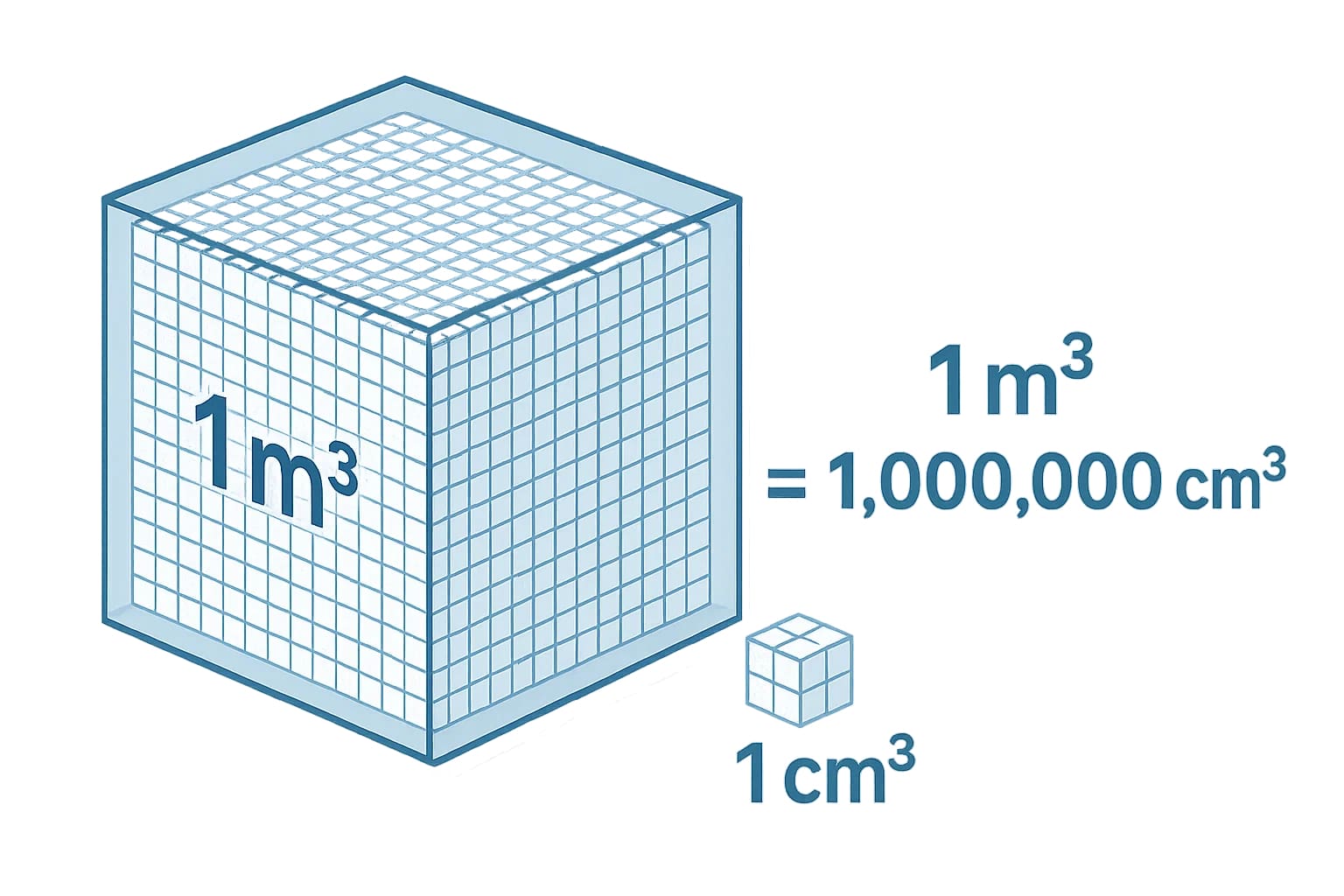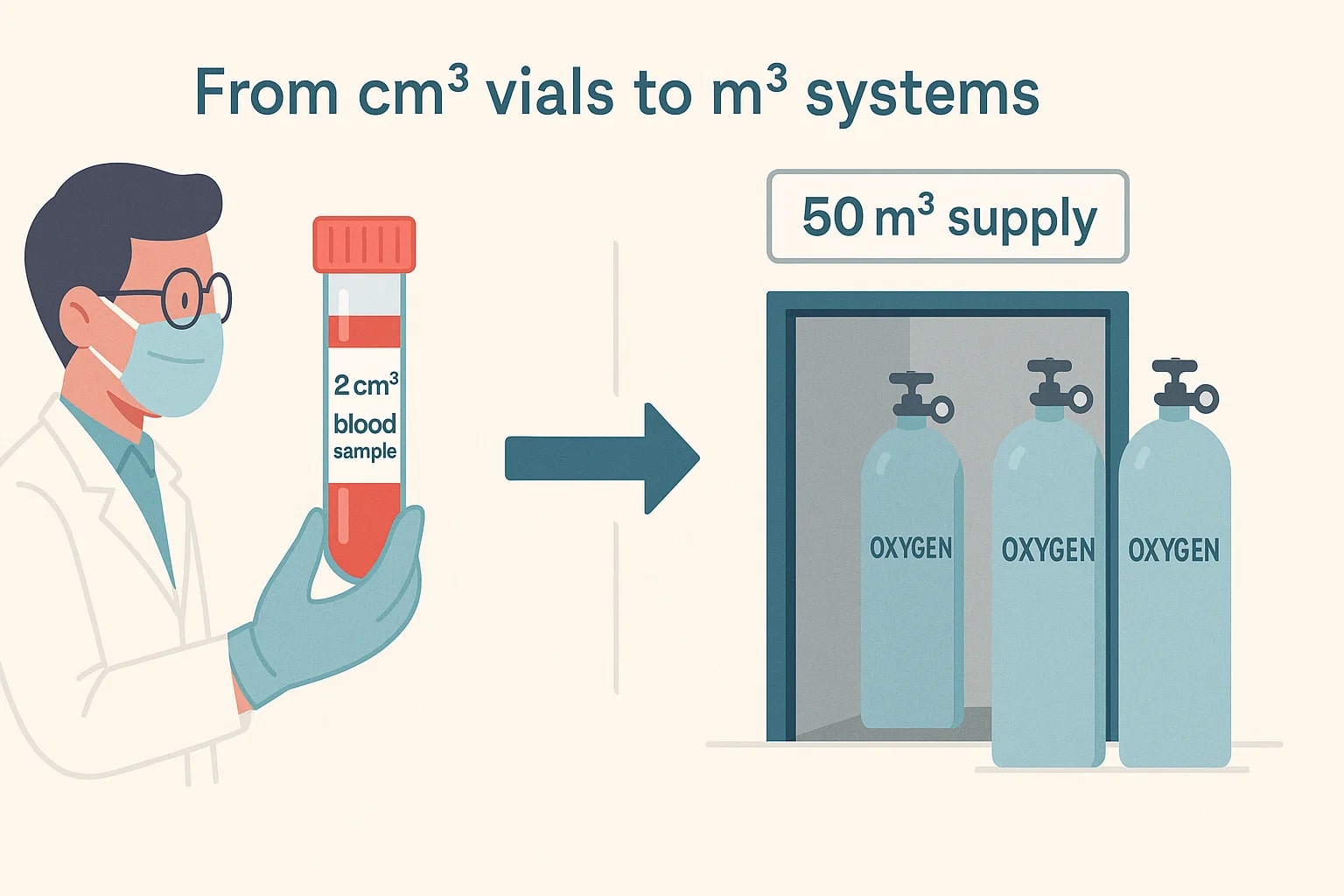cubic meter to cubic centimeter – How to convert m³ to cm³
The conversion from cubic meters to cubic centimeters bridges two extremes of scale. Cubic meters are standard for large spaces like rooms, tanks, or construction sites, while cubic centimeters are used in laboratories, medicine, and packaging. Knowing how to connect them helps translate between the macro and micro worlds.
What is a cubic meter (m³)?
A cubic meter is the volume of a cube with sides of 1 meter. It equals 1000 liters or 1,000,000 cm³. This unit is used globally in construction, shipping, and environmental science.
What is a cubic centimeter (cm³)?
A cubic centimeter is the volume of a cube with sides of 1 cm. It equals 1 mL or 1⁄1000 liter. The unit is vital for precise contexts like medical dosing, lab experiments, and consumer packaging.
Conversion formula – cubic meter to cubic centimeter
The difference in scale is huge, but the math is simple.
The base equivalence is:1 m³ = 1,000,000 cm³
To convert cubic meters to cubic centimeters:1 cubic meter = cubic centimeter × 1,000,000
To convert cubic centimeters to cubic meters:1 cubic centimeter = cubic meter ÷ 1,000,000
Examples:
-
2 m³ = 2,000,000 cm³ -
750,000 cm³ = 0.75 m³

For easy calculations beyond these units, Jetcalculator’s Volume Converter and its complete set of Conversion Tools provide fast, reliable answers across both metric and imperial systems.
Do you know?
-
In medicine: MRI scans often measure organ or tumor sizes in cm³, while hospital infrastructure uses m³ for oxygen systems and air flow.
-
In classrooms: Teachers use 1 m³ boxes filled with 1 cm³ cubes to help students visualize how a million tiny cubes equal one large cube.
-
In shipping: Cargo ships and tanks list total capacity in m³, but smaller packaging details may still be tracked in cm³.
One million cubes in a single box
In healthcare, this conversion comes to life every day. A lab technician may analyze a 2 cm³ blood sample, while hospital engineers track the oxygen supply in m³. Both scales must work together: the precision of a vial and the capacity of an entire facility.
The same pattern appears in science and industry. Researchers handle cm³ for controlled experiments, but when their innovations scale up for real-world production, the units expand into m³. One conversion formula keeps those two worlds aligned.

Connecting micro to macro
The formula 1 m³ = 1,000,000 cm³ represents more than a number — it’s the bridge that allows measurements to travel from the smallest vials in a lab to the largest tanks in construction or shipping.
By converting smoothly between cubic meters and cubic centimeters, industries and researchers keep detail and scale connected. It’s how the metric system ensures that one set of units can describe both a single drop and an entire container.

